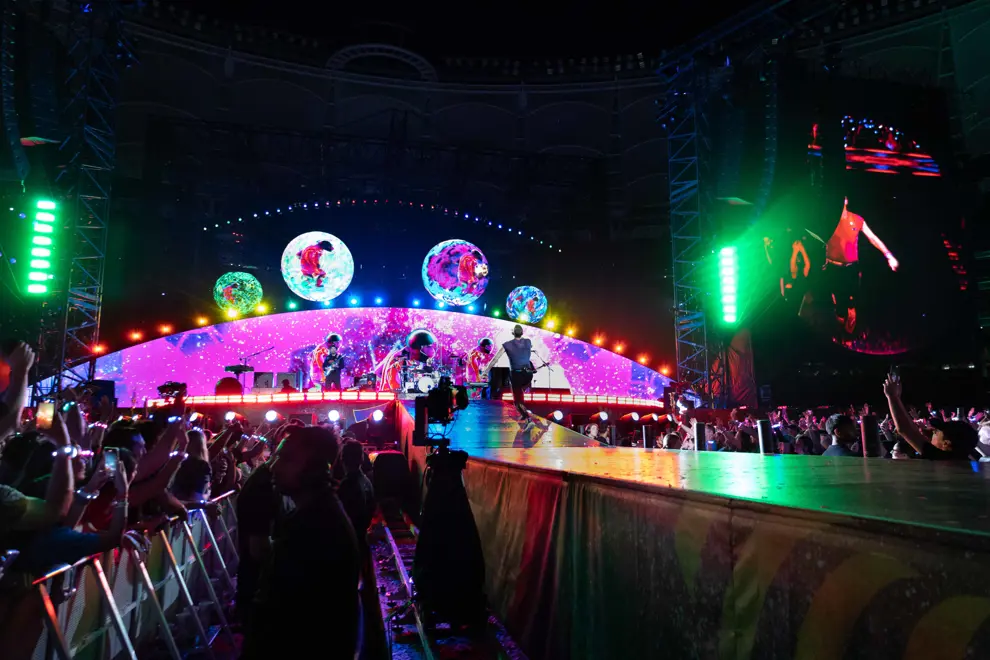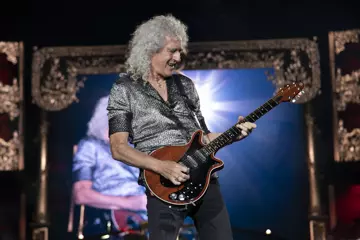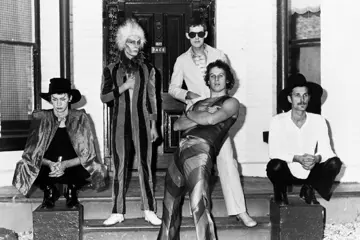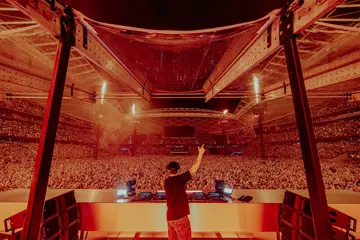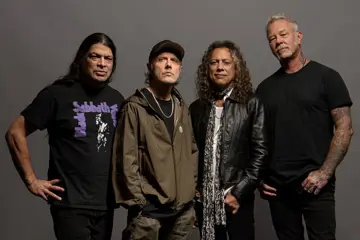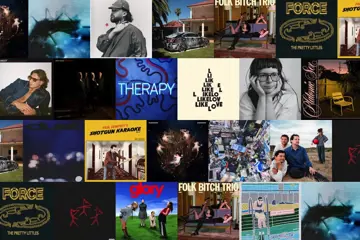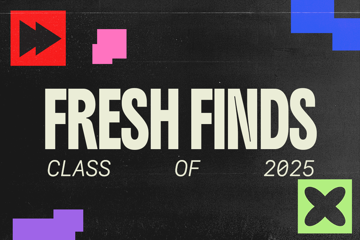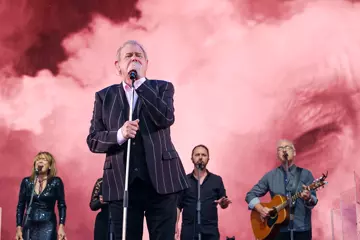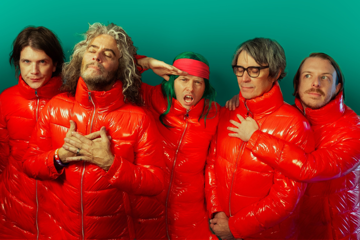Facial recognition technology that allows patrons at concerts and festivals to grab-and-go at beverages and food outlets and get back to the show in quick time.
A new generation of virtually invisible holographic screens with such astounding clarity and definition that holograms of rock stars could be a regular occurrence at events, along with virtual meet-and-greets backstage.
More personalised use of stadium seats. Having allowed patrons to order food and drinks to their seats, there are more entertainment options while waiting for the show, including personalised news and social media feeds.
These were some of the topics discussed at US magazine Pollstar’s summit earlier this year. Most will be introduced in Australia to make a difference, as local stadiums spend millions of dollars on living up to fans’ growing expectations of the live experience.
Some could change the way we view the experience. Take, for instance, a Bluetooth transmitter that can broadcast to an unlimited number of receivers.
It will be a boon to those hard of hearing. It could send an English comedy show to one in multiple languages.
A festivalgoer too tired to stand up to see the next band could return to their tent and hear the show from there. Or stand in the crowd and listen to all the acts on different stages.
Quicker visits to food and beverage stalls are already common in Australia, and consumption has jumped up by 30 per cent.
Don't miss a beat with our FREE daily newsletter
In March, the 60,000-seat Optus Stadium in Perth unveiled the latest of its state-of-the-art AI-powered vision technology: a touchless checkout terminal that allows patrons to sprint out of the auditorium and up the stairs to the busy Mrs Mac’s Pie Shop on Level One.
With the use of one of eight Mashgin AI-powered point of sale terminals, the food and drink and payment is identified and paid for, and the fan is back in front of the action as quickly as possible.
One hundred stadiums and arenas in the United States use the technology. The Perth stadium was the third in Australia after the 53,000-capacity Adelaide Oval and the 53,343-seat Marvel Stadium in Melbourne.
It wasn’t that long ago that thick concrete and glass at stadiums caused poor wireless signal reception for 15,000 or 20,000 users. Now, the new generation of concert and sportsgoers demands what they get at home or elsewhere.
Connectivity is now at least 90 per cent, and most stadiums have connection to all of the stadium – seating zones, food service areas, administration offices and backstage areas – and the entrance points.
“This means that the experience begins as they arrive, long before the actual event itself,” says Optus Stadium head Mike McKenna.
In Telstra’s testing of the Paul McCartney show at Marvel Stadium before 52,000 punters, over 90 per cent of fans in the field area had a usable connection during the busiest period of the concert. Average 4G download speeds for those on the field were over 13 Mbps and 2.5 Mbps for uploads, with peak concurrent usage of 10,800 users in the stands and 2,800 on the field.
This month, ICC Sydney announced a $2.09 million investment in audio visual, LED screen and lighting inventory to give promoters and show designers greater creative flexibility and technical efficiency.
Its LED screen inventory has more than doubled, with an additional 154 sqm of Vuepix Infiled AR Series LED—a world-class system known for its ultra-bright output and fine pixel pitch of 2.9mm.
Its Chief Executive, Adam Mather-Brown, advises, "Our ‘More Than A Venue’ team strives to anticipate the future event demands of our clients and attendees. Our latest investment in LED technology allows us to shape environments that attract, entertain and engage attendees."
As patrons expect more options in their experience, stadium operators are giving them more. Whether it’s more space for them to hang out before and after the event, turnaround chairs for Gen Z to feel part of their social group, larger video screens, or wider eating options, technology is advancing the live concert experience.
Sports
In the 2025 football season, features introduced for sports fans could be of benefit to music patrons.
According to a report by Farmonaut, Football Australia is using AI camera technology and NBN connectivity at key venues to livestream matches in 4K through Superloop “to YouTube, OTT platforms, and other domestic and global media destinations of FA’s choosing.”
The idea is to expand fan loyalty and introduce more revenue through brand marketing, which could translate to music events.
AFL clubs have witnessed a huge surge in fan engagement and attendance after using preference and behaviour data to offer more tailor-made offerings to fans, deals that bundle tickets and merchandise, real-time updates on seat availability and upgrades, and streamlined loyalty program management.
Catching Crowd Movement
Passive data collection service Meshh allows promoters to track the movements of an audience through the movement of Wi-Fi-enabled mobile phones throughout an event or festival venue as a proxy for people.
Its General Manager, Andrew Stone, explains to TheMusic.com.au: “Our work focuses primarily on movement and behaviour and not moods. Strategically placed Meshh Sensors around venues turn on automatically during events' operating hours and can detect the 'pings' of mobile phones in proximity to those Sensors.”
Stone adds, “Proximities can be narrowed down to within a meter. From an operational perspective, you can look at things like traffic and dwell times in different areas like Stages, Concessions, F&B and Sponsor Activation Zones. So, essentially what areas are working, how effectively and when.”
Brands and sponsors at festivals and concerts also learn how effective their site activations are.
They get metrics like what percentage of people stop and engage, what percentage walked by, how long they stayed and how many returned.
Meshh. sensors have been used at Beyond The Valley, Laneway, Splendour In The Grass, People First Stadium, MCG, Marvel Stadium and Commbank Stadium, to name a few.
It has been deployed for rights holders, agencies and brands in plenty of places around the world.
In case there is a privacy issue, Stone stresses, “By passive, it is a General Data Privacy Regulation (GDPR) compliant service that does not collect any personal information and therefore does not require patron consent to track.
“What this allows us to do is put together a comprehensive behavioural data set, analysing fan behaviour and supporting operational and commercial reporting and decision making.”
Other services use an AI program that combines features such as de-identified CCTV footage, weather data, and social media to accurately predict crowd movements and mood around the stadium.
This allows teams to prevent problems before they occur and implement a range of measures, such as opening more exits, redirecting people, giving live updates, deploying more staff, or playing music to keep the mood up.
Metallica Unveils Future Engagement
An illuminating look at technology’s opportunities for live music fans took place on March 11 this year. Apple Vision Pro unveiled a next-level Metallica concert from Mexico City as a fully immersive 360-degree spatial audiovisual event.
During the three-song set from the September 2024 show, which featured voiceovers from all band members, fans stepped onto the virtual stage, moved between vantage points, and placed themselves in the middle of the crowd and in the famed Snake Pit.
The 25-minute production began backstage, and fans followed singer and rhythm guitarist James Hetfield up to the stage and felt the thrill of the roar of the sell-out crowd. At one moment, fans could fly over the audience and watch their faces or sit next to Lars Ulrich as he walloped his drum kit.
A great Superfan came when Hetfield kneeled on the stage and leaned towards a fan, and they both screamed into each other’s faces. Hetfield then went back to singing, but the camera stayed on the fan as he fell back, then leaned onto the stage and started to weep.
The experience was equally as overwhelming for the band, Ulrich told Apple Music’s Zane Lowe afterwards.
"You walk out into the stadium, and the sense of the crowd that you're approaching... I'm getting goosebumps thinking about the experience.
“Because you immediately are no longer a bystander, you're having the same experience James is having, with the same level of enthusiasm, excitement and anticipation...
“I've never ever experienced anything like it as a fan of a band or an artist..."
Watching the concert back, the drummer went on to say it was "pretty overwhelming, sort of surreal, you get – still to this day – self-conscious. Really? That's what I look like when I drum?
“But it's so fucking crazy, and when your [Apple's] team came out a few months before and we were having the conversation about doing it, and understanding the technology and the possibilities (...) and then seeing a Metallica concert like that, and on top of that in Mexico City (...) it's such a beautiful thing."

